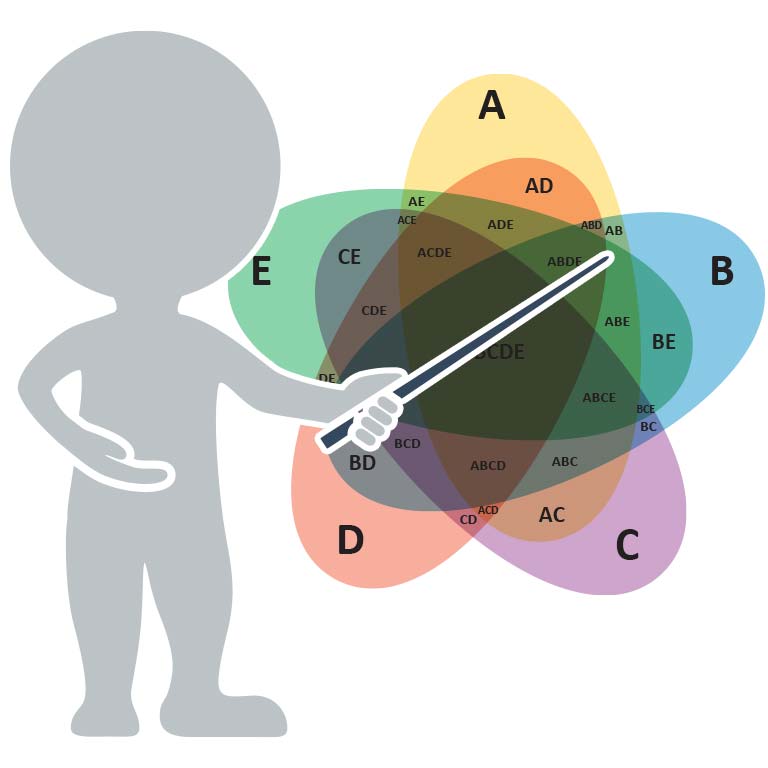During every orchestra website review, several orchestras deserve special recognition for how well they satisfied the requirements for each category or subcategory as well as demonstrating particular originality and creativity for specific website components. As such, the Special Recognition awards are designed to highlight individual achievements among orchestra websites and to promote them as benchmarks within the business…
Although an individual orchestra may have had an overall low score in this year’s review that certainly doesn’t imply that they didn’t do a particularly good job at satisfying the requirements of any individual category or any of its subcategories. Consequently, any of the 84 professional orchestra websites evaluated in the review are eligible to receive an Adaptistration Orchestra Website Review Special Recognition Award.
 In 2005 the Detroit Symphony combined the idea of an interactive monthly concert calendar with a flash based inset frame, allowing patrons to hover their mouse pointer over a date on the calendar and the respective concert info appears immediately to the right along with a nice graphic (usually of a soloist or conductor). Two years later, Detroit continues to offer a benchmark example of this outstanding feature.
In 2005 the Detroit Symphony combined the idea of an interactive monthly concert calendar with a flash based inset frame, allowing patrons to hover their mouse pointer over a date on the calendar and the respective concert info appears immediately to the right along with a nice graphic (usually of a soloist or conductor). Two years later, Detroit continues to offer a benchmark example of this outstanding feature.
On the other side of Michigan, the Grand Rapids Symphony deserves recognition by demonstrating how a smaller budget organization can offer a similar text-only mouseover feature, making searching for concerts quicker and easier.
As an interesting side note to the awards in this category, two orchestras that implemented a complete redesign experimented with the traditional month calendar format. The Boston Symphony and Indianapolis Symphony both implemented a horizontal calendar format on their respective home page. Boston’s result offered something that was slightly more familiar to traditional calendars while Indianapolis went with a more graphic approach.
Boston’s design, which placed the horizontal calendar directly below the drop down menus, meant that any slight movement of the mouse cursor toward the top of the calendar caused a drop down menu to expand, getting in the way of easy calendar navigation. In Indianapolis’ case, it simply took too long to scroll through concert events to get to any particular day/date. Although it is nice to see experimentation, both versions ended up feeling counter-intuitive and made searching for concerts a slow and mostly frustrating endeavor as compared to using a traditional month calendar format.
 The Atlanta Symphony utilizes a convenient print-at-home ticket purchase option which eliminates the dreaded will-call line anxiety. Airlines have been offering this feature for years and it is nice to see an orchestra moving in this direction and remove one potential hurdle that might keep ticket buyers away.
The Atlanta Symphony utilizes a convenient print-at-home ticket purchase option which eliminates the dreaded will-call line anxiety. Airlines have been offering this feature for years and it is nice to see an orchestra moving in this direction and remove one potential hurdle that might keep ticket buyers away.
The San Francisco Symphony deserves recognition as they continue to be the only ensemble offering the Concert Concierge, an interactive component designed to help ticket buyers select concerts. If you already know what you want, the Columbus Symphony has the fastest ticket buying process of any orchestra website. It allows ticket buyers to select a concert and complete a ticket purchase transaction in a blazing 48 seconds!
After a full season in service, the Nashville Symphony’s seat selection feature continues to be years ahead of comparable offerings from any other professional orchestra in the review; simply put, it exudes the essence of “online sheik”. Details of Nashville’s virtual fly-though seat selection component can be found in the article from 9/25/06 or better yet, simply visit their virtual seating chart yourself (concert hall or caberet style) to discover just how much fun it is to find your ideal seat.
Finally, the Harrisburg Symphony continues to demonstrate smaller budget ensembles can create a ticket buying experience that provides users with views of the stage from seating sections as well as the ability to select individual seats.
 Although a fraction of the orchestras in the 2007 review offer any sort email contact for musicians, two ensembles have finally taken advantage of a simple, yet effective solution to some of the more difficult aspects of posting email address for musicians and both are smaller budget ensembles. The New Mexico Symphony has an email address at the nmso.org extension posted for each musician in the orchestra and when clicking on a musician’s respective email link, it automatically inserts “Please forward to [Musician Name]” in the subject field.
Although a fraction of the orchestras in the 2007 review offer any sort email contact for musicians, two ensembles have finally taken advantage of a simple, yet effective solution to some of the more difficult aspects of posting email address for musicians and both are smaller budget ensembles. The New Mexico Symphony has an email address at the nmso.org extension posted for each musician in the orchestra and when clicking on a musician’s respective email link, it automatically inserts “Please forward to [Musician Name]” in the subject field.
The Kalamazoo Symphony simplified the process by posting one email link along with the following disclaimer, “For privacy reasons, the musician’s e-addresses are not used. Instead, your message will be sent to the Webmaster for forwarding. Please avoid writing things that may be of a personal nature.” The Florida Orchestra throws caution to the wind and posts direct email contact for the vast majority of musicians along with their bio and picture. Speaking of email, the Las Vegas Philharmonic was the only organization to post a direct email link for the Board of Directors President (not to mention a bio and pic).
For the fourth straight year, the Oregon Symphony receives special recognition for the best method for showcasing the musicians. The formula, Biography-Musician Moment-Player Portrait-Musical Legacy, remains unchanged and even though navigating the feature has become a bit cumbersome since it was introduced in the 2004-2005 season, it is still a winner.
At the same time, the National Symphony continues to update their Meet The Musicians page where a flash based interface provides a picture of each player when visitors mousever over their respective instrument. Additionally, the orchestra continues to add additional installments to the already wonderful set of high production quality video interviews with individual musicians.
In addition to promoting musicians with bios, photos, and contact info, the Virginia Symphony and Symphony Silicon Valley have focused on creating lengthy teaching and performance resource pages featuring musicians who wish to have their information posted. This is a wonderful way to reinforce one of the fundamental, yet often overlooked, benefits of attracting and retaining high quality professional musicians: they form the base for grass roots cultural enrichment.
 Among all the categories, this one improved the most from 2006. This is due in large part because many of the smaller budget ensembles have taken advantage of third party donation services.
Among all the categories, this one improved the most from 2006. This is due in large part because many of the smaller budget ensembles have taken advantage of third party donation services.
At the same time, the Chicago Symphony deserves special recognition for demonstrating how a straightforward, easy to use, and secure donation page should function. Not only is the page accessible in one click from the home page but potential donors can give money to the CSO annual fund or the Civic Orchestra as well as set up matching employer gifts and reoccurring gifts in a variety of options.
On the other end of the budget spectrum, the L.A. Chamber Orchestra introduced a wonderful donation page with their redesigned website. Like Chicago, potential donors can give to annual fund or set up an employer matching program. Along those lines, they provide a very well written page detailing how employer matching programs work and how potential donors can approach their company to see about setting up a program. Lastly, the LACO has set up a donation program they call “Sound Investment,” which allows potential donors to contribute toward a special new music fund.
 As orchestra websites evolve, so does the amount of content they include. For the past two years the Chicago Symphony and Nashville Symphony continue to put an effective and straightforward navigation structure to good use.
As orchestra websites evolve, so does the amount of content they include. For the past two years the Chicago Symphony and Nashville Symphony continue to put an effective and straightforward navigation structure to good use.
Additionally, the Chicago Symphony deserves special kudos for adding a number of web based features that are becoming popular beyond technophiles. On their website’s home page, they provide direct links to the necessary flash plug-in for each of the major browser platforms. Additionally, they offer a wide variety of news, upcoming events, and PR feeds.
The St. Louis Symphony Orchestra (SLSO) deserves credit for coming up with a very simple, yet entirely useful tool to help potential ticket buyers prevent current interstate construction projects from keeping them away or ruining their trip into the hall. On the SLSO’s homepage, they have a construction notice along with three links taking visitors directly to other websites designed to help travelers avoid highway and ramp closures due to construction in the St. Louis area as well as provide live traffic conditions.
Although they don’t use a cutting edge video platform, the Las Vegas Philharmonic still deserves special recognition for offering seven seasons worth of master classes conducted by ensemble musicians as well as visiting guest artists, including a 2006-2007 season master class by violinist Lara St. John. This is an excellent example of how one of the smallest budget ensembles in the review can use readily available technology combined with solid content to create a wonderful resource for their local community as well as world wide visitors.
Among all of the review subcategories, the one for “Institutional Transparency” regularly receives the lowest average score. As such, only two organizations managed to score 10/10 points for this subcategory: the New York Philharmonic and Pittsburgh Symphony were the only orchestras to provide both Annual Reports and IRS Form 990’s.


